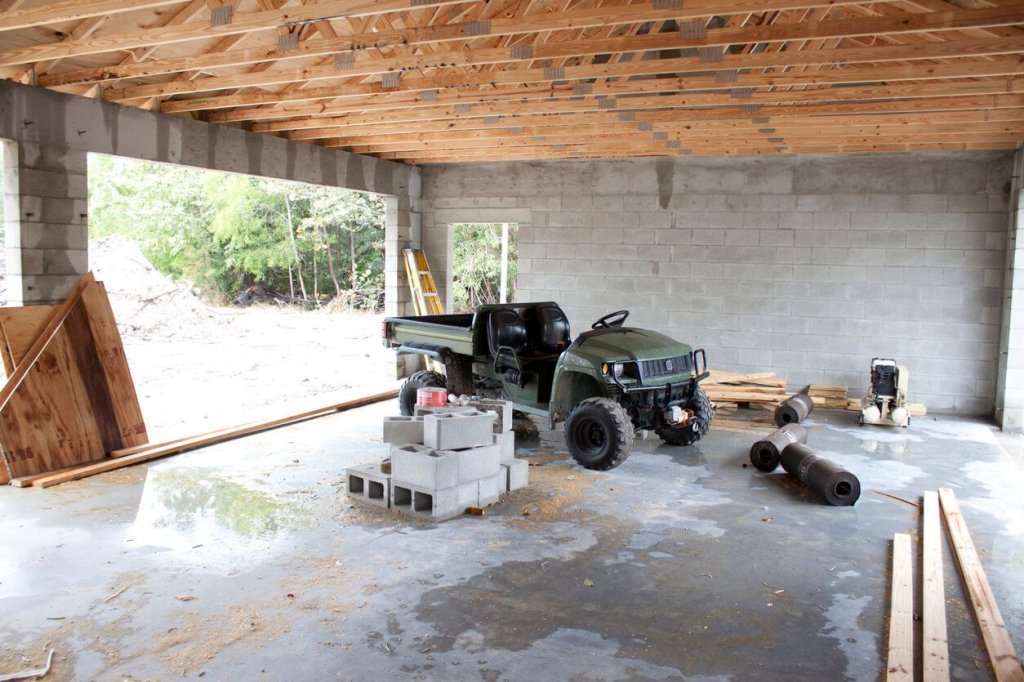Utility Vehicle Safety Toolbox Talk
Utility vehicles, also known as UTVs, are used on many construction sites today for the transportation of small loads of tools and materials. These vehicles come in many makes and models.
While UTVs are convenient and can help improve productivity, it is vital that they are used safely.
Increasing UTV incidents
The Consumer Product Safety Commission (CPSC) reported 49 fatalities caused by the use of UTVS in 2019. The majority of fatalities are caused by rollover crashes.
Unfortunately, not all UTV incidents are reported and categorized correctly. It is estimated that, with the current popularity of these vehicles, the actual number of injuries and fatalities is far greater than realized.
UTV safety and best practices
When it comes to UTVs, having the right tool for the job means being sure you have a work-appropriate UTV and not a recreational all-terrain vehicle (ATV). The difference between the two is easy to see, as the recreational version will not come equipped with a cargo bed in the rear.
UTV will also typically include the following features:
Rear cargo bed with tie-down cleats
25 MPH max speed
Balloon tires
Seats for multiple people
Low gears for power/weight
Head and tail lights
Recreational models usually seat fewer people and are built for speed with much less cargo capacity.

Driver safety training
An worker driving a UTV should be trained in the safe operation of the vehicle before using one. Many people assume you can treat UTVs like miniature cars, which is incorrect. These vehicles do not handle, brake, or accelerate like cars and trucks do. They have a limited turning radius, low clearance under load, and different types of blind spots to be aware of.
Before you drive
Always follow the manufacturer’s recommended maintenance schedule to keep the vehicle in the best and safest shape possible.
Proper training with a safety advisor, or at least another experienced UTV driver, is highly recommended before using UTVs on the construction site.
Before you use a UTV, make a complete walk-around safety check looking for:
Leaks
Deflated tires
Broken safety belts and latches
Broken lights
Fuel
Clear field of view
Protective netting and doors
Attachments
If you notice a potential issue, don't try to make the best of a bad situation. Find a safer alternative until repairs can be made.
Use all installed safety equipment on your UTV, including seatbelts, window netting, doors, and locks, and do not allow people to ride or sit where there is not a proper seat. Always keep your hands, arms, legs, and feet inside the UTV, especially when it is moving.
It can be tempting to skip some of these safety steps for a quick ride across the jobsite. However, the more closely you follow UTV safety practices, the less likely you are to be injured in case of an accident.
Pay attention to the ground you're driving on
UTVs are designed to be driven off-road on softer, reasonably level grades. They can sometimes cover some rugged ground with light loads, but whenever you are hauling tools and materials, level ground is best no matter the load size. If possible, select a UTV with a ROPS (Roll Over Protection System) for enhanced safety.
Remember that the majority of fatalities from UTV accidents are caused by rollover crashes. UTVs can easily tip and roll if the ground is too steep, uneven, or loads become unbalanced.
When using a UTV on the construction site be sure to avoid:
Uneven grades
Steep slopes
Driving diagonally up/downhills
Uneven loads
Tall obstacles
Holes and excavations
Mark areas of the construction site where the grade is steep or uneven to alert drivers as well as pedestrians. Objects sticking up from the ground or holes should be clearly marked with cones or flags as well.
Best UTV driving practices on the construction site
Construction sites are busy places with many obstacles. The speed limit on most construction sites is 25 MPH, so pay attention to how fast you're going at all times.
Here are some additional best practices for safe UTV use:
Always drive straight up or down on hills. This is important for preventing rollover accidents.
Slow down to turn. UTVs characteristically have high centers of gravity and heavy loads change their balance points.
Use 4-wheel drive if available and slow speeds on slippery surfaces to prevent skidding.
Maintain payloads within the weight limits and people limits.
Be sure all payloads are secured for travel.
Increase your braking distance and decrease your speed with heavier payloads.
Secure UTVs safely when work is done
Be sure to park the vehicle on flat, level ground to avoid unintentional movement or rolling. When the vehicle is left unattended, turn off the ignition, set the parking brake, and put it in gear. This will make it much less likely to move on its own and also deter joyriders.
Unattended UTVs are tempting targets for joyriders, including children. To help prevent unauthorized use when UTVs are stored on the construction site, take the keys and if possible use a no-start control.
Many vehicles have a no-start switch or program that stops the engine from starting and running. This essentially kills the vehicle in place until an authorized user disables the no-start and uses the right combination of keys.
Using multiple safety features like these can keep people from inadvertently injuring themselves or others in unattended UTVs.
Find and schedule topics faster
Raken's toolbox talk app makes it easy to choose from a pre-loaded library (or upload your own), then schedule and assign topics for any project. We'd love to show you how in a demo and get you started on a free trial.